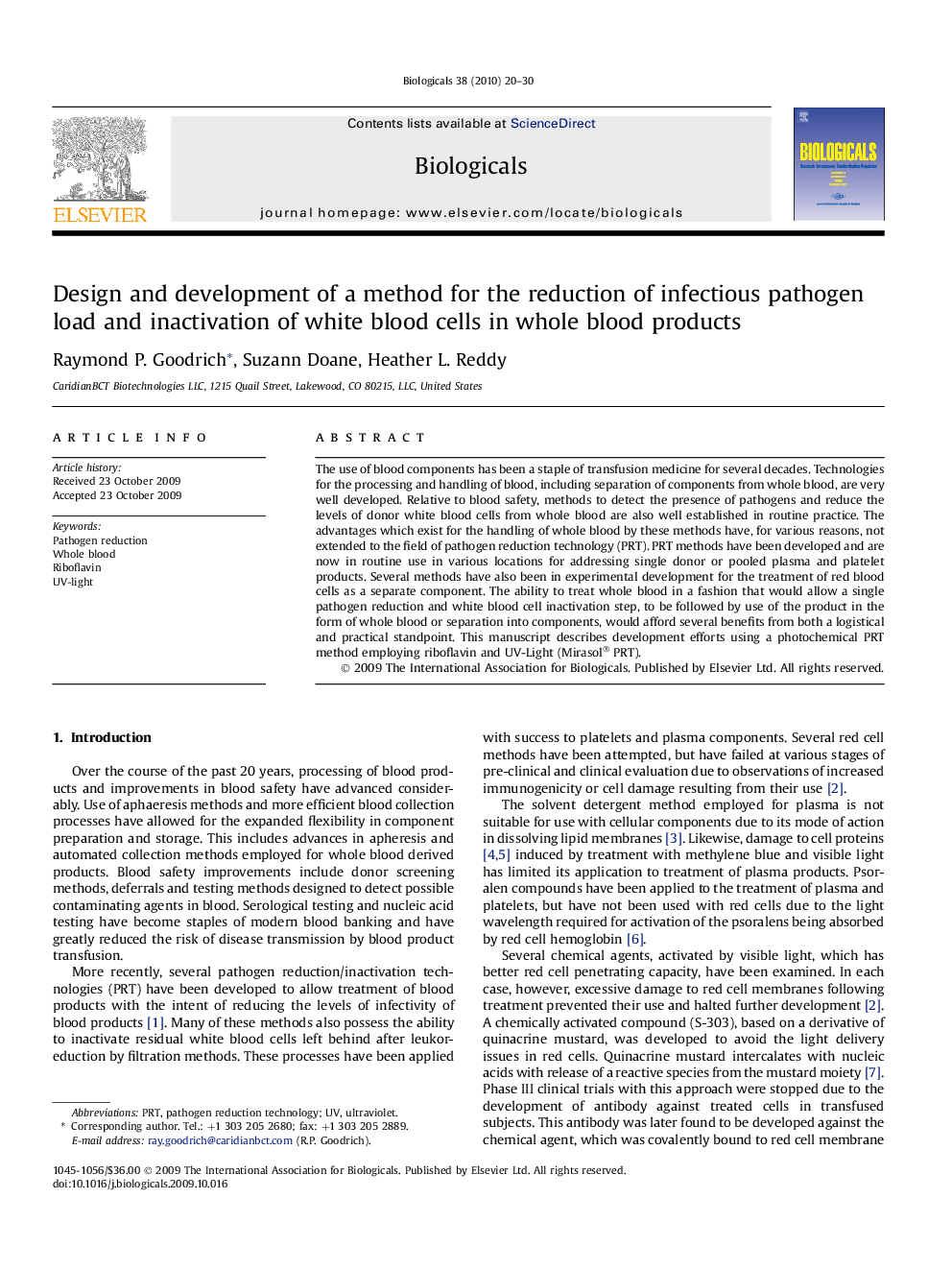| Article ID | Journal | Published Year | Pages | File Type |
|---|---|---|---|---|
| 2034260 | Biologicals | 2010 | 11 Pages |
The use of blood components has been a staple of transfusion medicine for several decades. Technologies for the processing and handling of blood, including separation of components from whole blood, are very well developed. Relative to blood safety, methods to detect the presence of pathogens and reduce the levels of donor white blood cells from whole blood are also well established in routine practice. The advantages which exist for the handling of whole blood by these methods have, for various reasons, not extended to the field of pathogen reduction technology (PRT). PRT methods have been developed and are now in routine use in various locations for addressing single donor or pooled plasma and platelet products. Several methods have also been in experimental development for the treatment of red blood cells as a separate component. The ability to treat whole blood in a fashion that would allow a single pathogen reduction and white blood cell inactivation step, to be followed by use of the product in the form of whole blood or separation into components, would afford several benefits from both a logistical and practical standpoint. This manuscript describes development efforts using a photochemical PRT method employing riboflavin and UV-Light (Mirasol® PRT).
